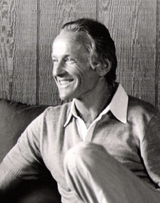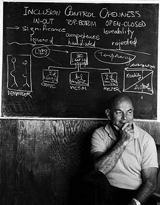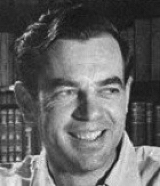The Esalen years
In 1971, Rebillot is part of the creative bustle in San Francisco. After teaching at San Francisco State College and Stanford University, he has created The Gestalt Fool Theatre Family, a commune and a radical performance group, and commenced experimental work, combining theatre, ritual and therapy.
He then joins the Esalen Institute in Big Sur, a place where human potential development is being explored and where experiential research is flourishing.
There he meets John Lilly, a scientist exploring altered states of consciousness and Stanislav Grof, a psychiatrist who looks into psychotic crisis as a rite of passage. He trains in gestalt with Dick Price, one of the two co-founders of Esalen and a student of Fritz Perls, the originator of gestalt therapy. He studies group dynamics with Will Schultz. And he meets Joseph Campbell, a renown specialist of compared mythology. In his book published in 1949, The Hero with a Thousand Faces, Campbell had identified what he calls the "monomyth" or "hero's journey": a pattern of adventure and personal transformation that can be found in all heroic tales, in all cultures.
These encounters with Price, Schutz and Campbell, the personal experiences and thoughts they share, have a definite influence on Rebillot's work within the human potential movement. They will contribute to making him one of the pioneers of humanistic psychology.
This is a period when he explores all existing experiential approaches, looking for a holistic perspective on personal development.
Turning The hero's journey it into a powerful self-transformative experience
In 1972, Rebillot works with the medical staff of Turlok and Martinez mental hospitals, helping them to better understand the experience of mental suffering and the process along which it is possible to get out of it. These discussions lead him to consider that serious personal crisis is a way to deal with the lack of rites of passage.
He then realizes that it is possible to create a rite of passage based on the experience of the mythical dimension, from which people can draw what they need in order to move ahead on their own life-path.
He combines Campbell's monomyth as the basic, experiential structure, the spirit of antic tragedy as catharsis and healing process, and gestalt as a way to experience each key character as a facet of the self. Movement, meditation, ritual and group dynamics also have their role to play. The result is the powerful experiential workshop that he calls The Hero's Journey.
The European years
Paul Rebillot introduces The Hero's Journey in Europe in 1974 and, meanwhile, goes on facilitating personal development and gestalt training sessions at Esalen.
Along the years, his European tours take on more and more importance, taking him to France, Germany and Austria, England and Ireland, as well as the Netherlands, Switzerland and Italy, where he is met with a diversified public of private persons as well as health and education professionals. Year after year, Europe develops as his main area of influence.
In 1987, he receives a Laurance Rockefeller grant to write a book about The Hero's Journey workshop. The Call to Adventure: Bringing the Hero’s Journey to Daily Life, is published in 1993, with a foreword by Stanislav Grof.
Meanwhile, he has published in 1989 The Hero’s Journey: Ritualizing the Mystery in Spiritual Emergency: When Personal Transformation Becomes a Crisis, a book edited by Stanislav and Christina Grof.
He also has designed other self-discovery itineraries and, responding to the demand for advanced training, he has set up the School of Gestalt and Experiential Teaching where professionals learn how to design experiential processes and hone their mastery of Gestalt practices. He delivers these 3-year training cycles until 2005, as well as other seminars (including, of course, The Hero's Journey).
In spite of the response he gets, Paul Rebillot never behaves like a guru. He goes on asking for moderate fees and living modestly.
In 2006, he launches his last project and, with a cross-cultural group of students, designs a journey through the key steps of myth at the origin of the three monotheist religions: the story of Abraham. The resulting seminar, Children of Abraham, is facilitated by its nine co-designers in Germany and in Ireland.
In 2008, at the age of 77, Paul Rebillot puts an end to thirty-five years of European tours, and definitely goes back to San Francisco where he delivers training and supervision. In 2009, he is struck by a severe pneumonia. In February 2010, after eight months of striving to overcome the effects of respiratory failure, he dies peacefully, at his home, surrounded by close friends.
Paul Rebillot
A pioneer in the field of humanistic psychology,
Paul Rebillot designed in 1972 the workshop
The Hero's Journey, soon to be followed by other “inner adventure circuits”.





Paul Rebillot at Esalen
Stan Grof and Fritz Perls
Dick Price
Will Schutz
Joseph Campbell
Paul Rebillot




Paul Rebillot
Paul Rebillot
Paul Rebillot